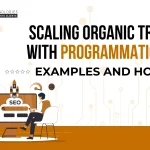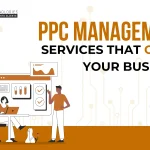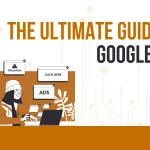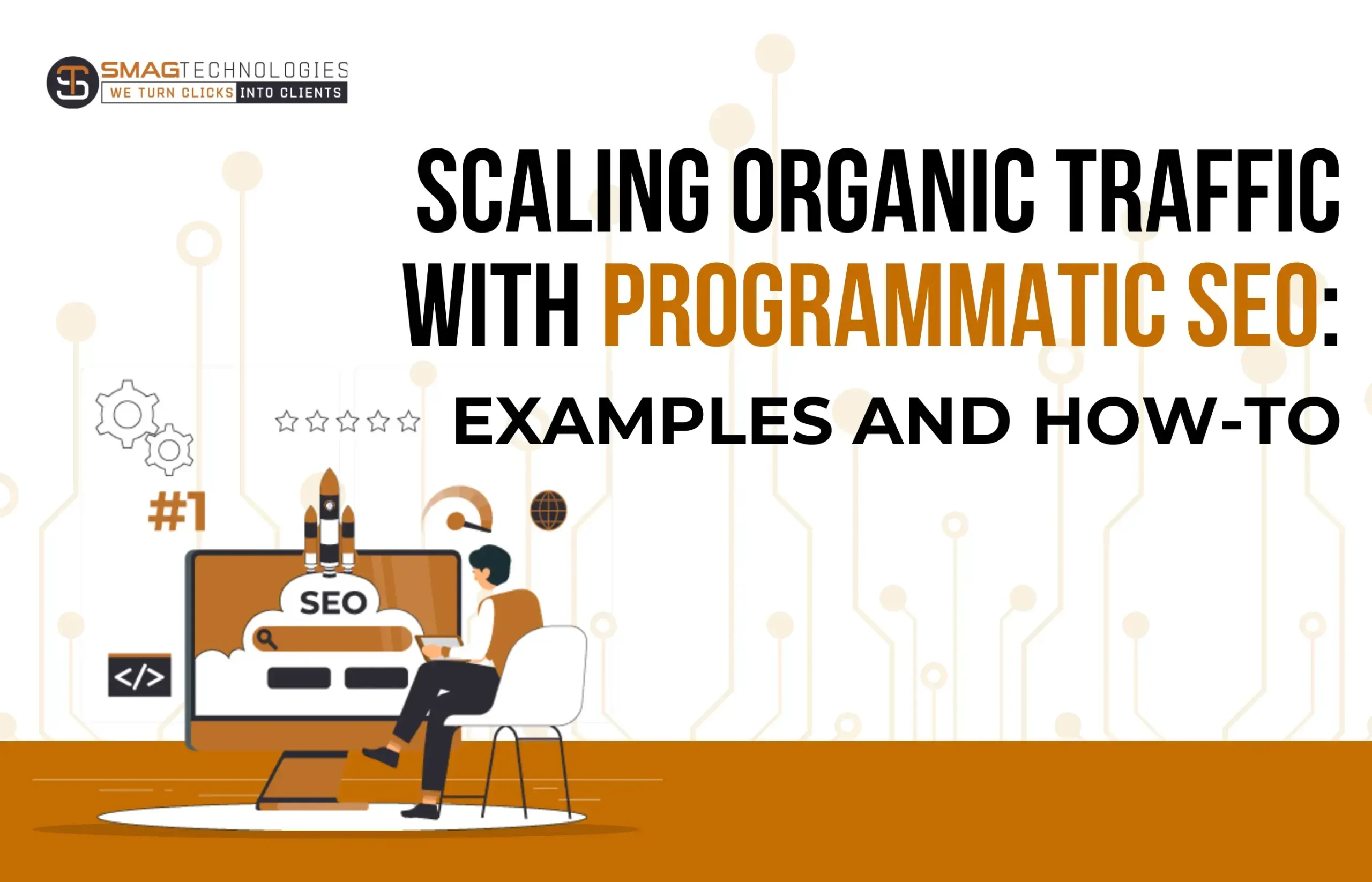With the constant evolution of search engine algorithms and increasing competition, businesses need innovative strategies to stay ahead. One such strategy is Programmatic SEO, a method that uses automation and data-driven techniques to optimize content at scale. This blog will discuss the intricacies of Programmatic SEO, providing actionable insights and examples to help you use its power for your website.
What is Programmatic SEO?
Programmatic SEO refers to the use of automated systems and processes to create, optimize, and scale website content. Unlike traditional SEO, which often involves manual keyword research and content creation, Programmatic SEO utilizes software and algorithms to handle these tasks efficiently. Programmatic SEO is an advanced approach to search engine optimization that leverages automation and data-driven methodologies to create, optimize, and scale content across large websites. By utilizing algorithms, software, and structured data, Programmatic SEO enables businesses to efficiently target a wide array of search queries with minimal manual intervention. This method is particularly effective for e-commerce sites, directories, and large-scale content platforms where managing thousands of pages manually would be impractical.
Key aspects of Programmatic SEO include:
Automated Content Generation:
Using templates and structured data to generate unique pages.
Data-Driven Insights:
Leveraging big data to identify keywords, trends, and content opportunities.
Scalability:
Easily managing and optimizing thousands of pages without manual intervention. Programmatic SEO is particularly beneficial for large websites, e-commerce platforms, and content-heavy sites where manual SEO efforts would be impractical.
How Programmatic SEO Differs from Traditional SEO?
While traditional SEO relies heavily on manual processes, such as individual keyword research, bespoke content creation, and manual link building, Programmatic SEO automates many of these tasks. Key differences include:
Manual vs. Automated Processes:
Traditional SEO involves hands-on efforts to optimize each page, whereas Programmatic SEO uses automation to handle repetitive tasks.
Scope and Scale:
Traditional SEO is ideal for smaller websites or focused campaigns, while Programmatic SEO is designed to manage and optimize thousands of pages simultaneously.
Data Utilization:
Programmatic SEO relies on extensive data analysis to inform decisions, whereas traditional SEO often depends on manual research and intuition.
By automating the more repetitive aspects of SEO, Programmatic SEO allows businesses to focus on strategic growth and innovation.
The Benefits of Programmatic SEO for Businesses

Implementing Programmatic SEO offers several advantages for businesses, especially those managing large websites or extensive content libraries. These benefits include:
Efficiency and Scalability:
Programmatic SEO automates the creation and optimization of thousands of pages, significantly reducing the time and effort required.
Improved Accuracy:
Data-driven insights ensure that each page is optimized based on current trends and search behaviors, leading to more accurate targeting and better results.
Cost-Effectiveness:
Automation reduces the need for large SEO teams, lowering operational costs while maintaining high levels of productivity.
Enhanced Performance:
By continuously analyzing and optimizing content, Programmatic SEO helps maintain high search rankings and adapt to algorithm changes more swiftly.
Broader Reach:
Programmatic SEO can target a wider array of keywords and search queries, capturing more organic traffic and expanding the audience base.
Developing a Programmatic SEO Strategy
With opportunities identified, it’s time to develop a comprehensive Programmatic SEO strategy. This involves planning and implementing a series of actions designed to optimize and scale your content. Key components include:
Setting Goals and KPIs:
Defining clear objectives and key performance indicators to measure success.
Content Templates and Frameworks:
Creating standardized templates for generating SEO-optimized content at scale.
Automation Tools and Software:
Selecting and implementing tools that facilitate automated content creation, keyword research, and performance tracking.
Internal Linking Structure:
Designing a robust internal linking strategy to improve navigation and SEO performance.
Implementing Programmatic SEO: A Step-by-Step Guide
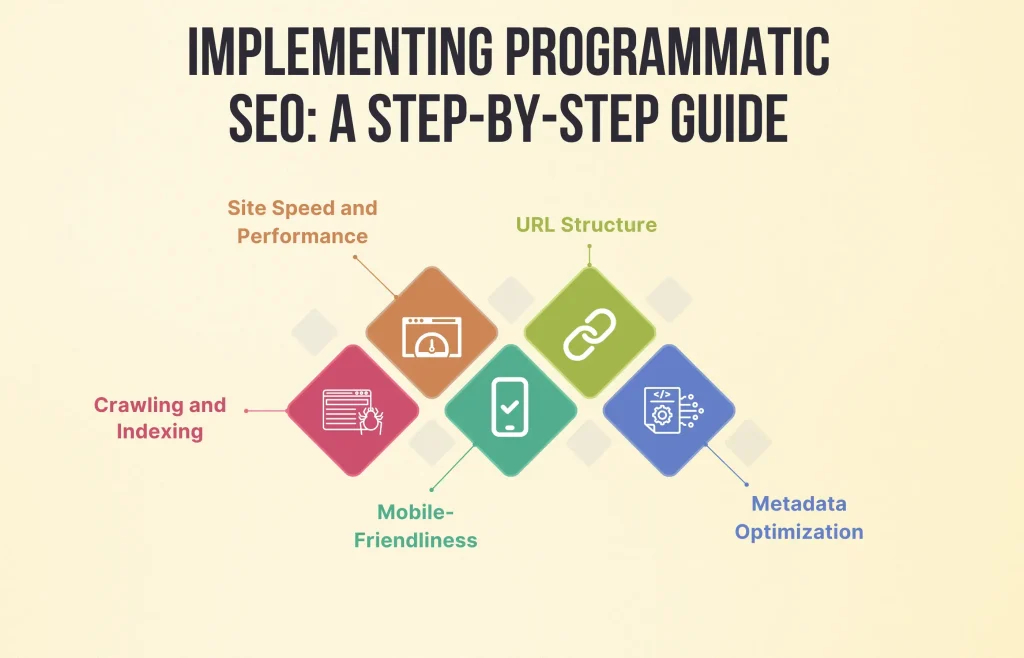
Implementing Programmatic SEO can seem daunting, but by breaking it down into manageable steps, you can effectively harness its power to boost your organic traffic. This guide provides a detailed roadmap to help you navigate the process, from conducting a technical SEO audit to automating content creation and optimization.
Conducting a Technical SEO Audit
A comprehensive technical SEO audit is the first step in implementing Programmatic SEO. This involves evaluating your website’s current SEO health and identifying any technical issues that could hinder your search engine optimization efforts. Key aspects of a technical SEO audit include:
Crawling and Indexing:
Ensuring that search engines can efficiently crawl and index your site.
Site Speed and Performance:
Optimizing load times to improve user experience and search rankings.
Mobile-Friendliness:
Ensuring your site is fully responsive and performs well on mobile devices.
URL Structure:
Simplifying and organizing URLs to enhance search engine readability.
Metadata Optimization:
Reviewing and optimizing title tags, meta descriptions, and headers. Conducting a thorough technical SEO audit helps lay a solid foundation for Programmatic SEO by addressing any underlying issues that could affect your site’s performance.
Successful Examples of Programmatic SEO
To illustrate the effectiveness of Programmatic SEO, let’s look at some real-world examples of businesses that have successfully implemented this strategy to boost their organic traffic.
Example 1: Boosting Local SEO Traffic
A local service provider used Programmatic SEO to significantly increase their visibility in local search results. By automating the creation of location-specific landing pages, each optimized for relevant keywords, they were able to:
- Covering all the areas they served, each with unique content and targeted keywords.
- Using data-driven insights to identify high-volume local keywords and integrate them into the content.
- Achieving higher rankings for local search queries and driving more targeted traffic to their site.
- This approach not only boosted their local SEO traffic but also helped them dominate the local market.
Example 2: Enhancing National SEO Campaigns
A national e-commerce site implemented Programmatic SEO to scale their content and capture more organic traffic across the country. Their strategy included:
- Using templates to generate unique, keyword-rich product descriptions for thousands of items.
- Creating and optimizing category pages based on popular search queries and trends.
- Using big data to inform content topics and optimize for high-volume keywords.
- As a result, they saw a significant increase in organic traffic, improved search rankings, and higher conversion rates.
Integrating Programmatic SEO with Technical SEO Services
Integrating Programmatic SEO with Technical SEO Services is essential for achieving comprehensive search engine optimization. While Programmatic SEO focuses on automating and scaling content creation and optimization, Technical SEO ensures that your website’s infrastructure is sound and search engine-friendly. Combining these approaches can lead to more effective and sustainable SEO results.
The Role of Technical SEO in Programmatic Strategies
Technical SEO plays a crucial role in the success of Programmatic SEO strategies. It ensures that your website is properly configured for search engines to crawl, index, and rank your content efficiently. Key aspects of Technical SEO in programmatic strategies include:
Website Architecture:
Designing a clear, logical structure that facilitates easy navigation and efficient indexing by search engines.
Site Speed and Performance:
Optimizing load times to improve user experience and search engine rankings, which is particularly important for large, content-heavy sites.
Mobile Optimization:
Ensuring that your website is fully responsive and performs well on mobile devices, which is a critical ranking factor.
Security and HTTPS:
Implementing SSL certificates to secure your site, which can positively impact search rankings.
Optimizing for Local SEO with Programmatic Techniques
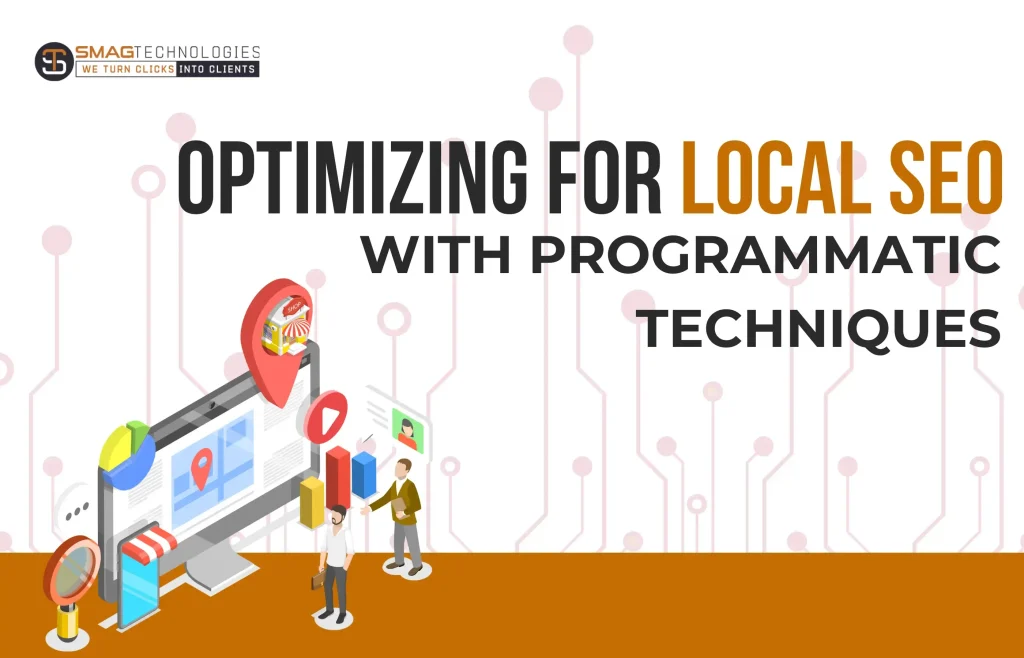
To dominate local markets with Programmatic SEO, it’s crucial to leverage automation and data-driven insights to scale your efforts efficiently. Key tactics include:
Automated Location Pages:
Creating a large number of location-specific pages using templates, each optimized for local keywords and tailored to the unique characteristics of the area.
Dynamic Content Insertion:
Using data feeds to dynamically insert relevant local information, such as nearby landmarks, events, or customer testimonials, into your location pages.
Localized Schema Markup:
Implementing schema markup to enhance search engine understanding of your local content, which can improve your visibility in local search results.
Ongoing Performance Monitoring:
Continuously tracking the performance of your local pages and making data-driven adjustments to optimize rankings and user engagement.
Conclusion
Incorporating Programmatic SEO into your digital marketing strategy can significantly enhance your organic traffic and search engine rankings, especially when combined with robust Technical SEO Services. You can outsource programmatic SEO to programmatic SEO agency like SMAG Technologies. From conducting thorough technical SEO audits to implementing data-driven strategies and automating content processes, their Programmatic SEO offers a powerful and efficient way to achieve your SEO goals. By continuously optimizing and adapting your approach, you can ensure sustained growth and success in the ever-evolving world of search engine optimization.
 seolounge
seolounge